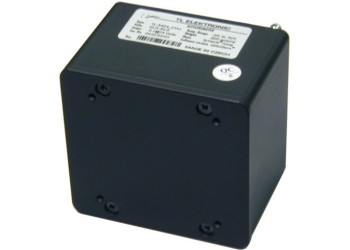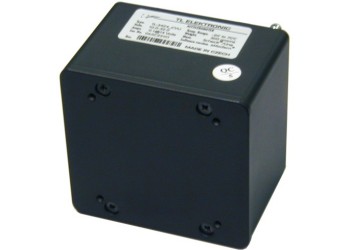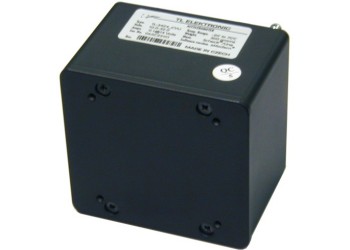Fatiguemeter TL-4324 is an ideal unit monitoring operational "G" acceleration of your aircraft in the vertical axis. After a simple installation into a centerplane of your aircraft, the Fatiguemeter will enable you to obtain the history of aircraft's operational "G" acceleration, number of landings with date and time, history of the operational "G" acceleration including air speed. It also signals if the operational "G" acceleration is exceeded. This unit is offered in several versions, which allow different modes of recording into the memory. The Fatiguemeter was developed in cooperation with the Czech Centre for Aeronautical and Cosmic research.
Price: On Request
Related products:
 | TL-4324_SPD | Fatiguemeter with two-parametric storing into memory and rolling memory and with internal air speed sensor |
 | TL-4324_SPP | Fatiguemeter with separate storing of ascending and descending half of amplitudes into memory and rolling memory and with internal air speed sensor |
 | TL-4324_SPT | Fatiguemeter with storing of ascending and descending half of amplitudes into memory and rolling memory and with internal air speed sensor |
- get the history of the operational acceleration load of your aircraft on the vertical axis
- set the filter for eliminating adverse vibrations in the construction
- set the limit values at two levels (Warning and Alarm) for all measured quantities, in case of exceeding these limits, the instrument will warn you in time of possible damage to the aircraft
- always be informed on the values reaching the limits, which could result in damage to the aircraft
- always be informed on the exceeded limits from the previous flight after turning the instrument on
- recording is activated by a switch on the undercarriage or by an internal pressure sensor after reaching the air speed you have set
- download the data from the Fatiguemeter with the GPRS Communication Module TL-5024 anywhere in the world - anywhere where the GSM signal and GPRS are available
- also suitable for IT offices and manufacturers for providing the operational values of the aircraft (contact us for further information)
Basic functions:
- monitor the operation of the Fatiguemeter with use of the control lamp on the instrument panel
- using your PC, download from your Fatiguemeter at any time the history of the measured values including symbols
- connect Fatiguemeter into the output of the signalisation unit, which will warn you of the exceeded limits
- connect your Fatiguemeter with the Intercom using the iFamily® Bus and gain the option of having a voice alert of the exceeded values
- you can at any time download the latest version of the firmware to your Fatiguemeter, thereby always having the latest functions we prepare for you
Other functions:
- designed for all types of aircraft ideal for installing into the centroplane of the aircraft or into the critical points of the construction
- measures 'g' acceleration and air speed, which is also recorded in the memory of the instrument
- two types of memory for recording the history of the acceleration values and the matrixes of frequency
- incorporates an input for the Marker switch that, when pressed, records a symbol into the log, e.g. before an acrobatic element
- enables the connection of an external speed pressure sensor
- high-precision measurement
- history of the measured values with use of the SchecK® method
Technical parameters:
- voltage: 10.0 to 32.0 Volts
- current consumption: 50 to 250 mA @ 14 Volts
- maximal voltage and current of signalization: 30 Volts, 1 Ampere
- measurement: +/-1%(not including sensor accuracy)
- measuring range: +/- 15g
- resolution: 0.1g
- operating: -20°C to 70°C (-4°F to 158°F) temperature range
- relative humidity: 95% without condensation
- load: +/-20 g
- vibration: 1 to 200 Hz
- weight: 250 grams (0,55 lbs)
- dimensions: 71x67x50 mm (2.795x2.637x1.968 inch)
- internal speed sensor 20 to 350km/h (10 to 189 knots) for recording control (version SAS)
- output status signal: grounded, max. 0.5 Amps
- communication line with a PC via standard RS-232c